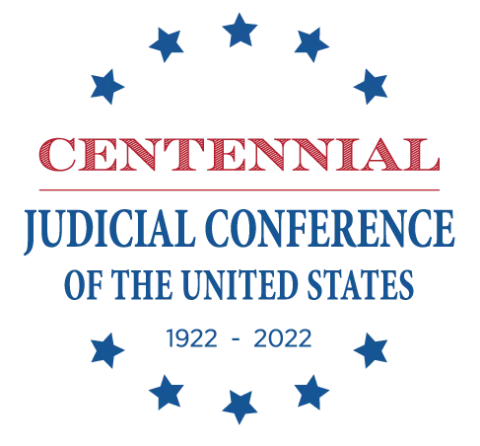
Over the last 100 years, the Judicial Conference of the United States has grappled with many issues: rising court caseloads and limited resources, natural disasters, public-health crises, and the safety of the Judiciary and the public. This year marks the centennial of the national policy-making body, which has helped ensure efficient administration of justice in the courts since 1922.
“The Judiciary’s power to manage its internal affairs insulates courts from inappropriate political influence and is crucial to preserving public trust in its work as a separate and coequal branch of the government,” Chief Justice John G. Roberts, Jr. said in his 2021 Year-End Report on the Federal Judiciary.
By statute, the Chief Justice of the United States serves as the Conference’s presiding officer, and its members are the chief judges of the 13 courts of appeals, a district judge from each of the 12 geographic circuits, and the chief judge of the Court of International Trade. The Conference convenes twice a year to consider administrative and policy issues affecting the federal court system, and to make recommendations to Congress concerning legislation involving the Judicial Branch.
Last week, the Conference met in person at the Supreme Court for the first time since September 2019. The last four regularly scheduled Conference sessions took place by teleconference due to the pandemic. At its first session in 1922, also held at the Supreme Court, then Chief Justice William Howard Taft presided, and the Conference discussed court congestion caused by the increase in Prohibition cases, among other timely matters.
The reports of the proceedings of all Judicial Conference sessions are available online and serve as an abbreviated history of judicial administration over the past century.
“Chief Justice Taft was prescient in recognizing the need for the Judiciary to manage its internal affairs, both to promote informed administration and to ensure independence of the Branch,” Chief Justice Roberts said in his report.
“The centennial of the Judicial Conference this year represents 100 years of progress, and the Judiciary should be proud of its accomplishments. But there is still plenty of work to be done, and it will be done.”
Judicial Conference at 100
Learn about how the Judiciary’s national policy making body has grappled with many issues to mark the 100th anniversary of the Judicial Conference of the United States.
Subscribe to News Updates
Subscribe to be notified when the news section is updated.
